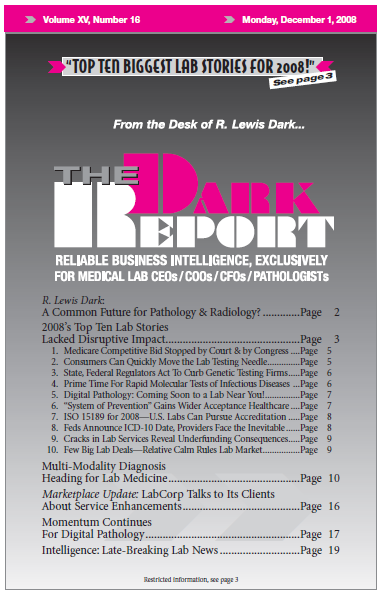CEO SUMMARY: Last month, digital imaging in pathology gained additional momentum with the latest FDA clearance. Aperio Technologies, Inc., now has FDA clearance to market its slide scanning system for reading digital progesterone receptor (PR) slides on a computer monitor. Aperio plans to file an application next year with the FDA for clearance to use …
Momentum Continues for Digital Pathology Read More »
To access this post, you must purchase The Dark Report.


